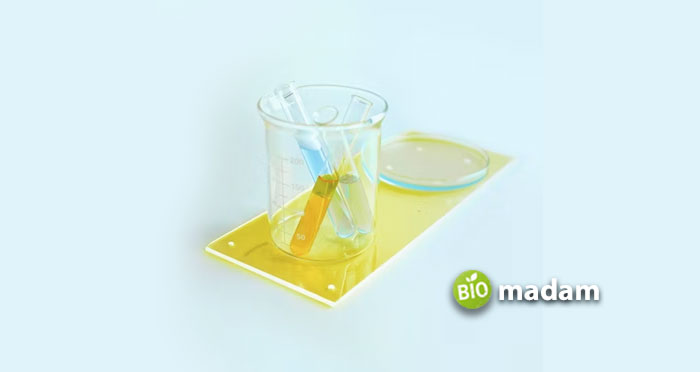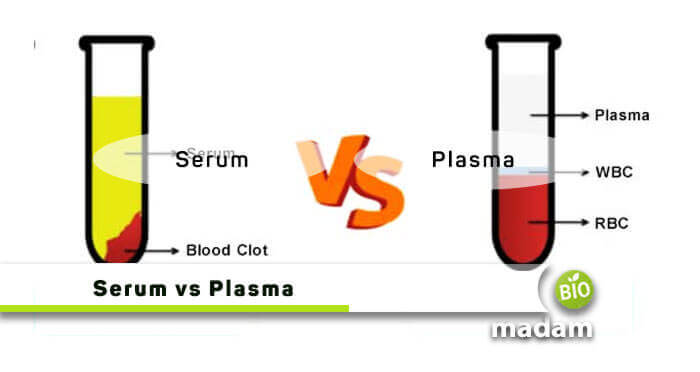A living body constitutes numerous cells, tissues, muscles, blood, plasma, and much more inside it. Similar are the two terms, serum and plasma, acquiring a significant portion of a body. Scientists have vigorously used them to perform different blood tests in laboratories, being abundant in blood. It is the central part of an organism that also helps collect information about various illnesses.
Serum and plasma compose proteins, vitamins, hormones, toxins, electrolytes, and whatever tiny substance is present around it. We can also quickly disintegrate them using the centrifugation method and utilize them for therapeutic and diagnostic purposes. The difference between them lies in such protein-like substances. A liquid material that detaches from the blood when it coagulates is called serum. At the same time, plasma is another liquid substance that firmly grasps blood cells in suspension. Let’s glance at the tabular comparison between the two for better awareness.
Serum and Plasma Difference – Comparison Chart
| Basis of Differentiation | Serum | Plasma |
|---|---|---|
| Density | 1.024 g/ml | 1.025 g/ml |
| Antibodies | Cross reacts with recipient antigen | Fight against foreign body |
| Life Span | Several days at 2-6°C | Stored yearly |
| Type | Fluid | Liquid |
| Water Content | Consists of almost 90% water | Consists of around 92-95% water |
| Fibrinogen | Absent | Present |
| Anticoagulant | Not needed | EDTA and Heparin |
| Usage | Blood typing diagnosing test | Diagnosing blood clotting like disorders |
What is Serum in Blood?
If we generally speak about the serum, it’s everything in the plasma, excluding blood cells and clotting factors. Being a liquid material, Serum is an essential source of different blood substances, such as different types of antigens, types of antibodies, proteins, hormones, and electrolytes. This portion of blood helps diagnose multiple diseases, for instance, hypertension, diabetes, cholesterol concentration, etc.
What is Plasma in Blood?
The entire blood contains almost 55% of plasma, further accumulating the maximum (90%) water. Other than water, albumin and fibrinogen help prevent fluid from leaking into adjacent cells and forming blood clots, respectively. The crucial role of blood plasma is to distribute all essential nutrients, antibodies produced by lymphocytes, proteins, hormones, and other substances in the body. Since it helps different cells get their desired substances, they deposit their waste while moving around. Hence, plasma is also responsible for waste removal.
Difference between Serum and Plasma

As we have mentioned that both are distinct from each other, so there are questions arising, like “What is the difference between serum and plasma?” Let’s find out the differences in detail below.
Definition
Serum
A liquid portion of blood that exists after the coagulation completes, excluding clotting factors and blood cells, is called serum.
Plasma
It is a yellow-colored fluid present in the blood which constitutes more than half of the blood volume to perform numerous functions.
Role of Centrifugation
Serum
We can usually obtain Serum through centrifugation after clotting, which is a comparatively tricky process.
Plasma
On the other hand, plasma is acquired through the same process but before clotting.

Major Constituents
Serum
A serum holds all essential substances in the blood, for example, antibodies, proteins, hormones, electrolytes, etc.
Plasma
This blood substance contains maximum water content, proteins (like globular and fibrous), and also the clotting factors. Not to forget, it excludes all blood clotting factors.
Volume & Density
Serum
It has a comparatively lesser volume than plasma, with a density of 1.024 g/ml.
Plasma
Whereas plasma has about 55% of the whole blood with a density of 1.025 g/ml.
Primary Function
Serum
Nowadays, experts are using an animal serum to produce anti-venoms, antitoxins, and such anti-substances for vaccinations. It is typically involved to diagnose diabetes, high cholesterol level, uric acid level, and blood pressure through blood tests.
Plasma
On the other hand, plasma helps a body transport excretory metabolites and similar substances inside a body. Another primary function of plasma is to regulate a body’s temperature and also to maintain blood pressure.
Final Verdict
Despite being the components of blood, serum and plasma are entirely different. They might be similar in having protein molecules but varies at the differential isolation process. The serum is the excess fluid after blood coagulation, whereas plasma is the entire liquid portion where blood cells are transported.

Hello, I would like to introduce myself to you! I am Chelsea Rogers, an experienced blog writer for science articles, holding an MPhil degree. My enthusiasm to grab the best knowledge, let it relate to botany, zoology, or any other science branch. Read my articles & let me wait for your words s in the comment section.

